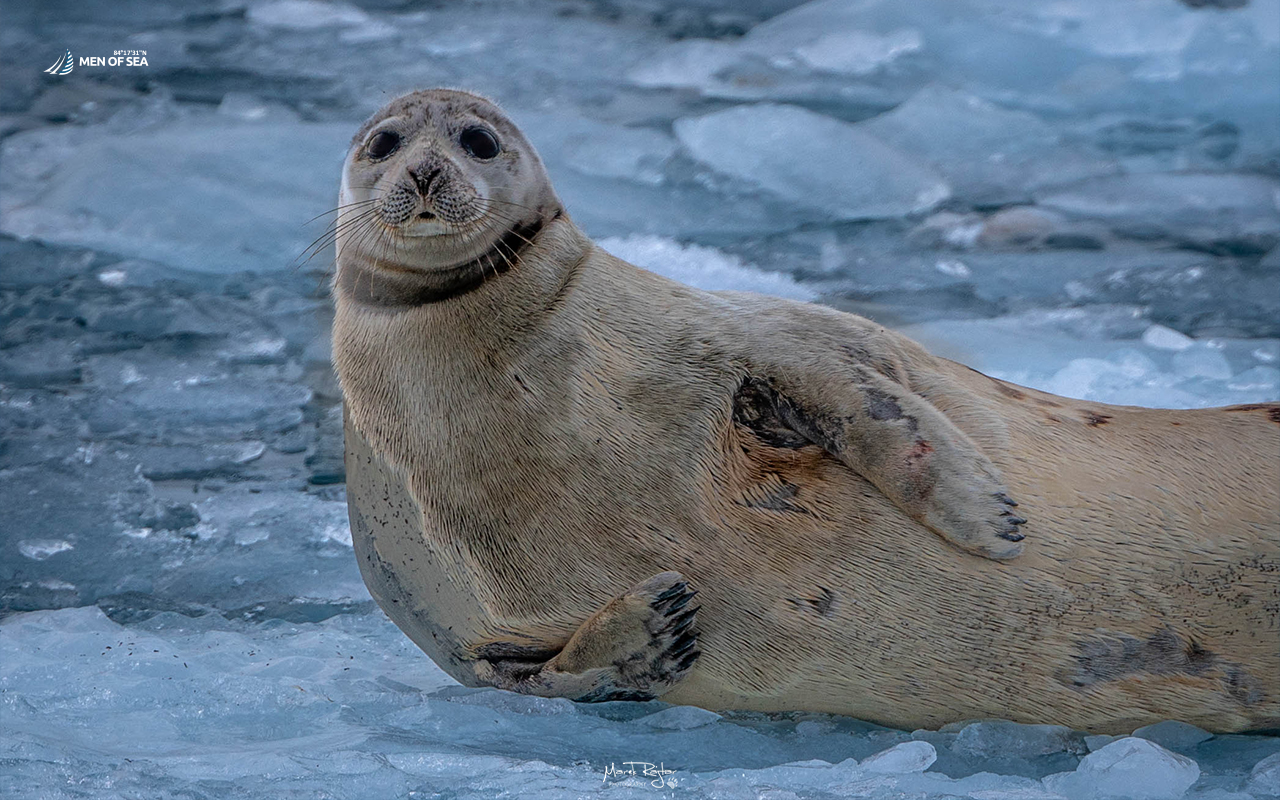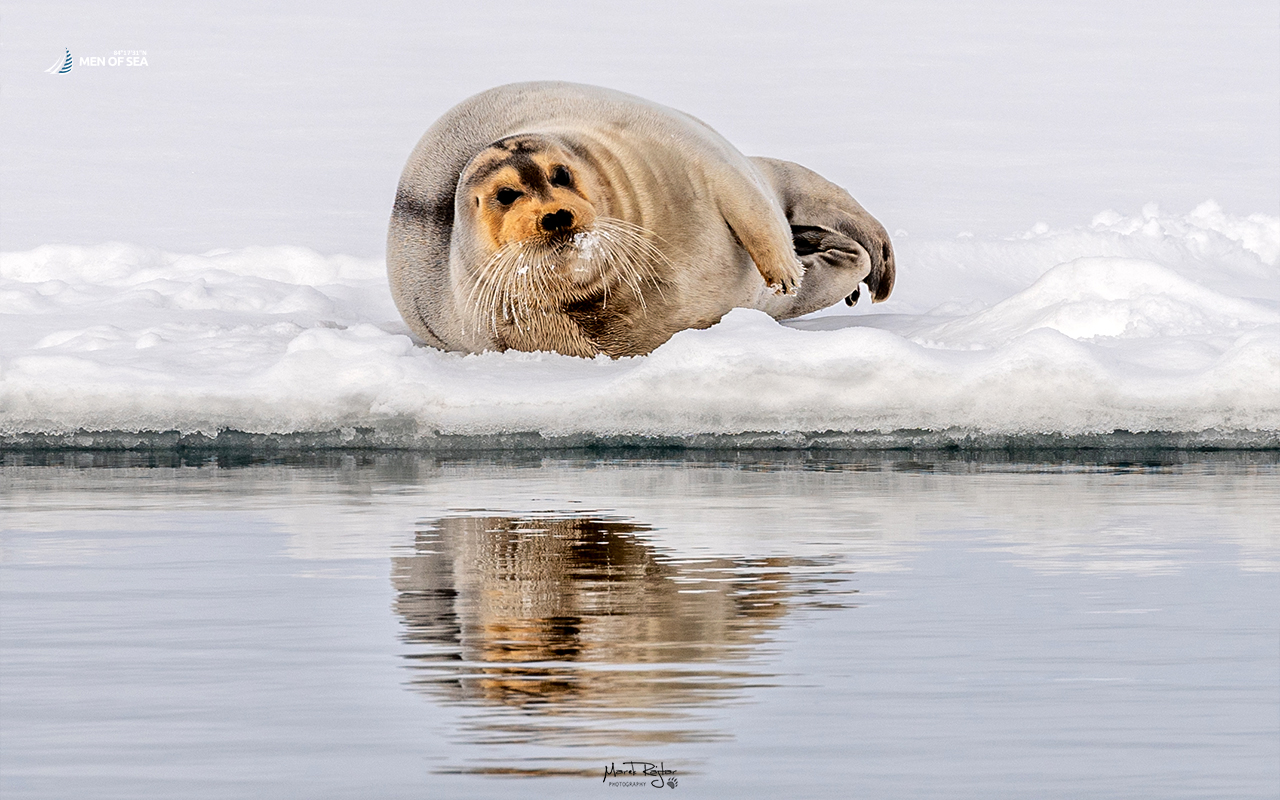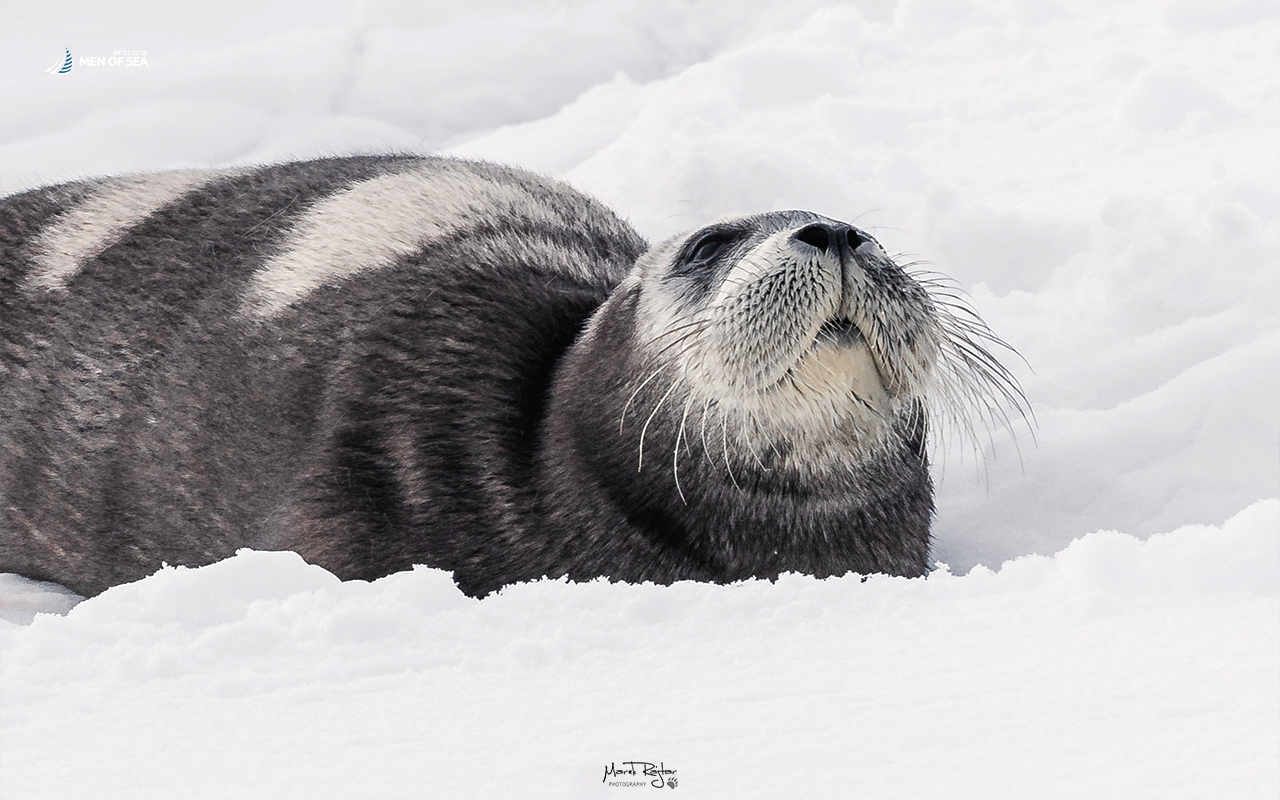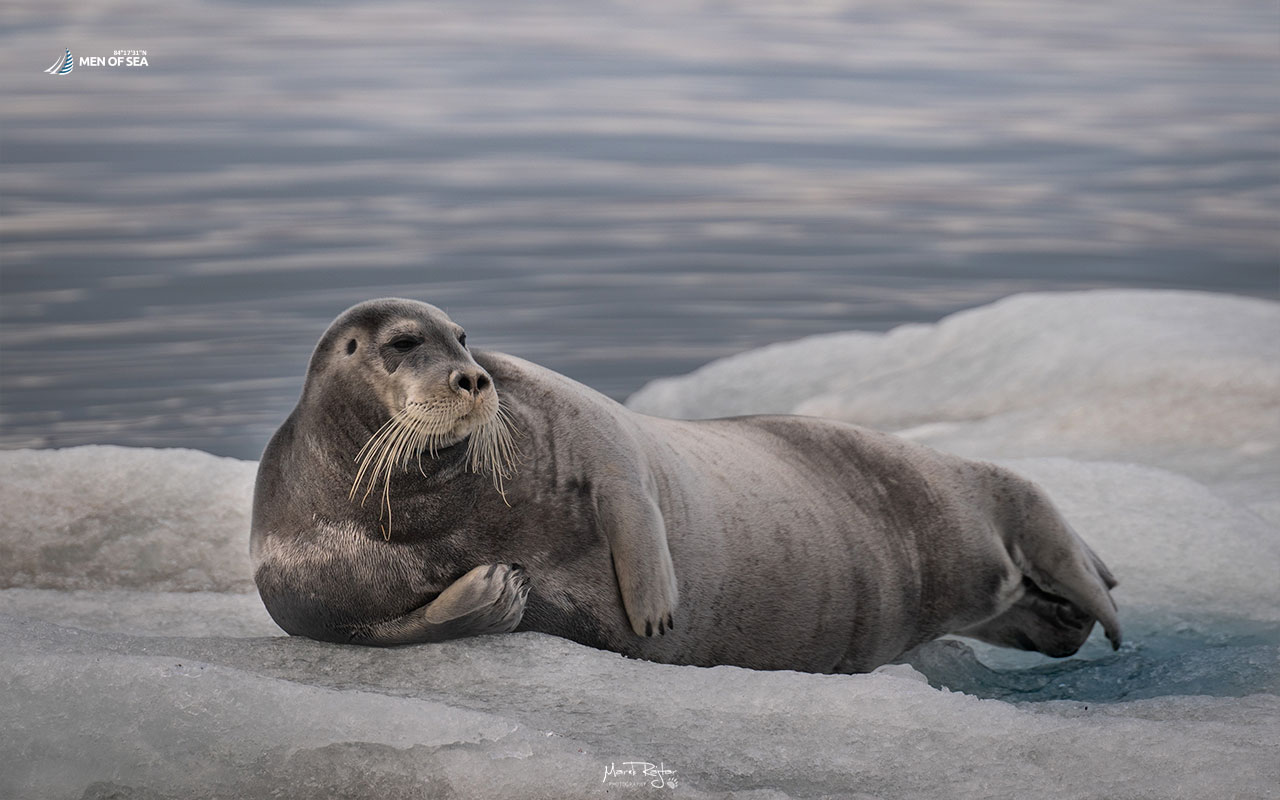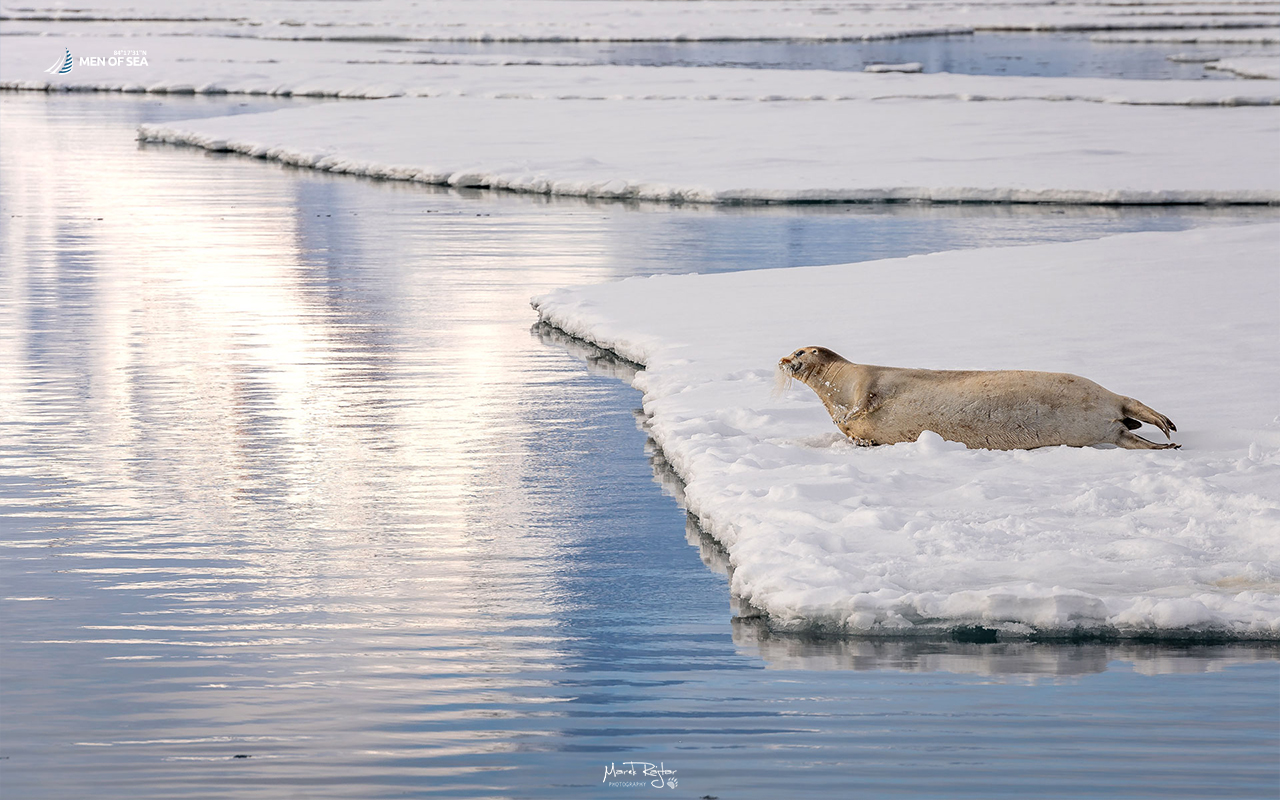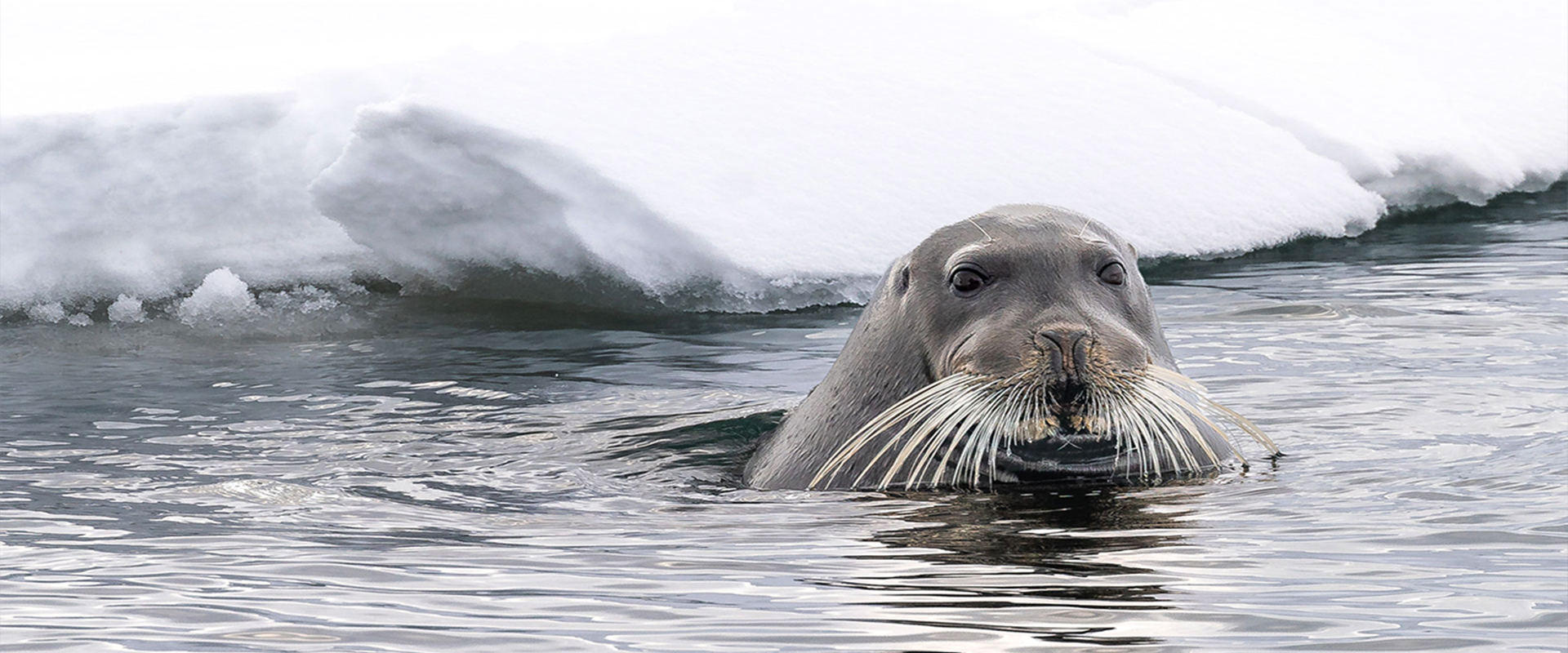
SEALS
BASIC INFORMATION
Seals are among the most timid animals found in Svalbard. This is understandable because they are the most appetizing prey for polar bears. Resting on ice floes, they must remain vigilant at all times to avoid attacks. When giving birth to pups, they must bury them deep in snow dens to prevent the bears from finding them.
An adult seal measures from 150 cm to 190 cm in length and weighs from 100 to 150 kilogrammes.
Females are smaller than males. These animals are characterized by round heads and large, expressive eyes.
They dive excellently in search of fish, which constitute their main food. They can descend as deep as even several hundred meters.
Seals on our trips
On Svalbard, we most commonly encounter common seals, sometimes called harbour seals. They have adapted their bodies to life in low temperatures by developing a thick layer of fat for thermal insulation. The most common colour of their fur is yellowish-grey with grey or brown spots all over their bodies. They lack external auricles; nevertheless, they have excellent hearing, which compensates for their poor sense of smell. Although they swim very well, they do not like to take long journeys, rarely venturing more than a few kilometres from the shore. The mating season lasts from September to October, so females typically give birth to one pup on land around June. They nurse them for a period of 6 weeks, then care for them for 3-4 years.
The second kind of seal most commonly encountered by us is the bearded seal, also known as the square flipper seal. It is the largest seal in the Arctic. The body length of males can reach 370 cm, and females 260 cm, and they can weigh up to 400 kg. They dive to a depth of 70 meters, where they search the bottom for their main food: invertebrates. They are dark grey, lighter on the belly and the muzzle, and their distinctive characteristic is long vibrissae. Their front and hind limbs are transformed into flippers.
During our trips, we encounter seals on ice floes closing fjords, most often in May and June. They lie on the ice or ice floes in herds or individually. We have witnessed polar bear hunts on them multiple times. We have seen bears lurking for hours near breathing holes in the ice. It has become customary to assume that where there are seals, polar bears are likely to be found, as they can smell them from several kilometres away and attract them to themselves.
Among other kinds of seals spotted by us on Svalbard are ringed seals.
Humans also hunt seals on Svalbard, although fortunately, this is not common.
Trips connected with SEALS
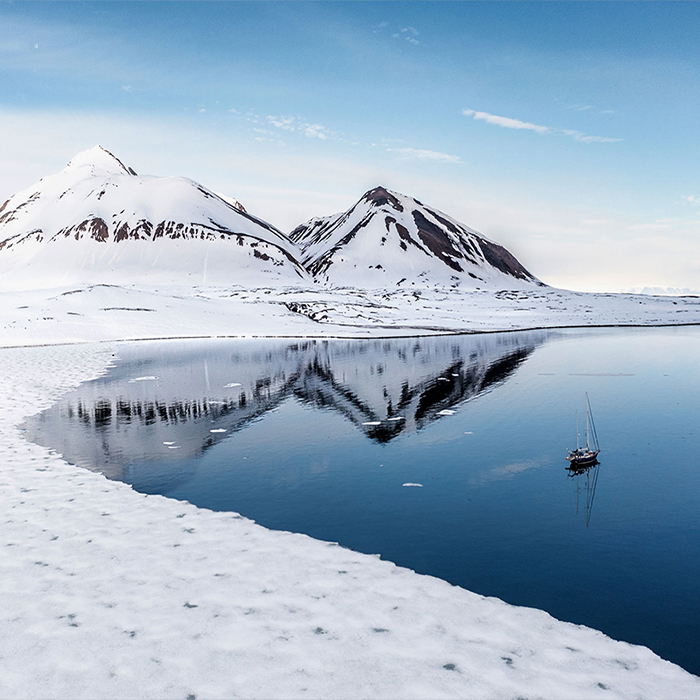
Across the Arctic Seas

12 dni
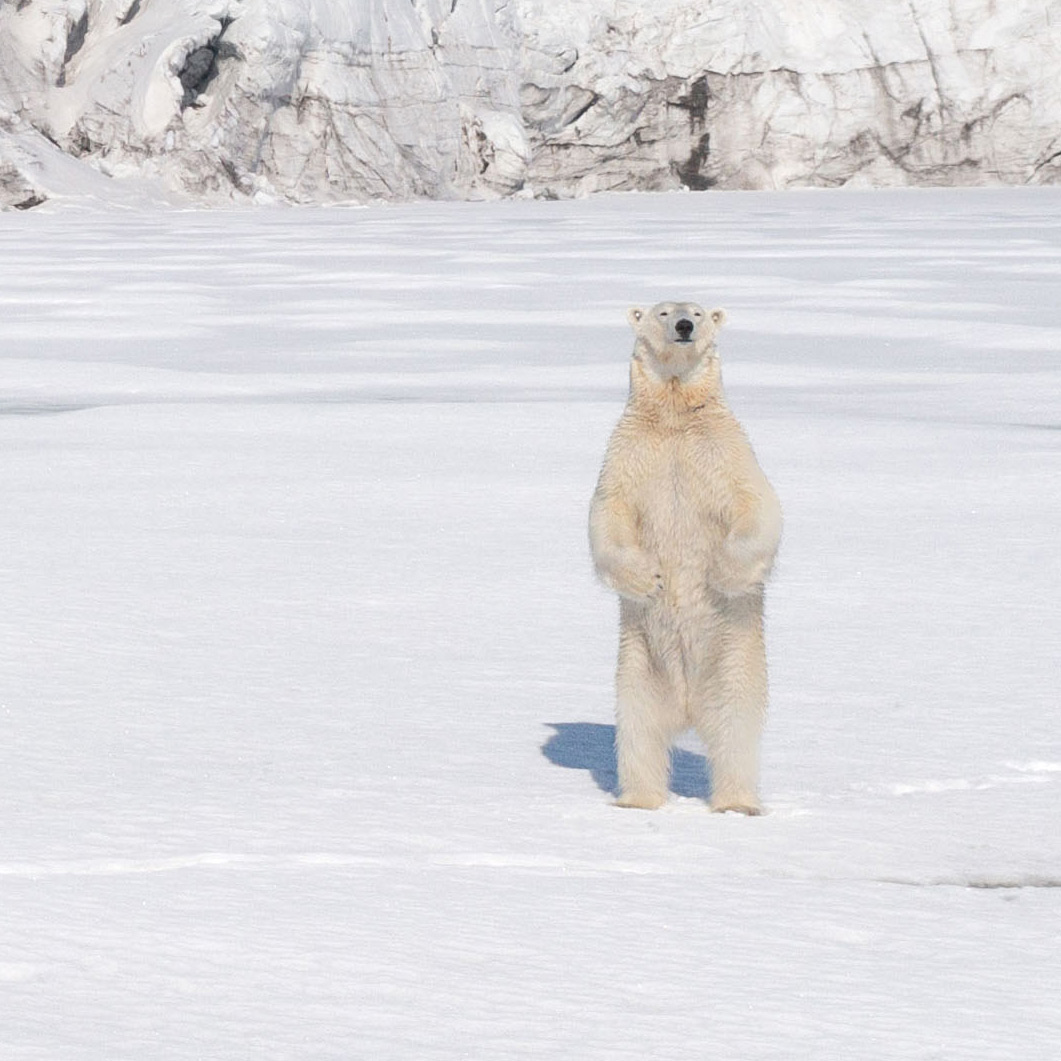
Animals of Svalbard Photo Safari #1

8 dni

Animals of Svalbard Photo Safari #2

8 dni

Animals of Svalbard Photo Safari #3

8 dni
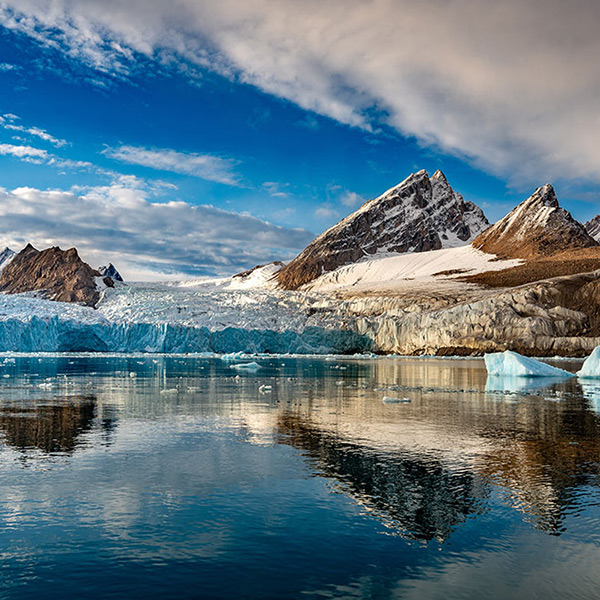
Spitsbergen in a week #5

8 dni
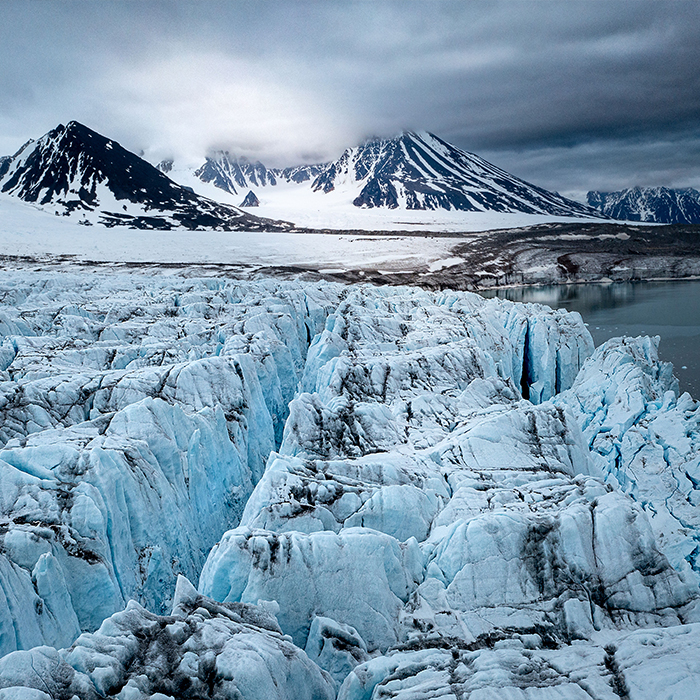
To the Edge of the North #1

10 dni

To the Edge of the North #2

10 dni

Spitsbergen in a week #6

8 dni

To the Edge of the North #4

10 dni

Spitsbergen in a week #8

8 dni
